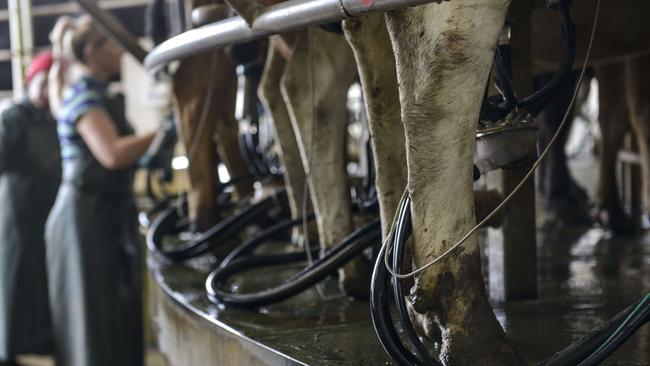Levy vote: Dairy farmers denied right to vote on levy cutbacks
Farmers will not be given the option to reduce the $32m in annual levies they pay Dairy Australia, which has $27m in reserves.

Australia’s dairy farmers will be not be given the right to vote for a reduction in the $32 million of milk levies they pay to their national research, development and marketing body each year.
The Weekly Times has been told the Dairy Levy Poll Advisory Committee decided on Monday to only offer farmers the options of either increasing or maintaining the current 2.8683 cents a kilogram levy on butterfat and 6.9914c/kg protein they pay to Dairy Australia.
The move has angered a vocal minority of the committee’s members, who argue all farmers should have the right to vote for a range of options in the March 2022 poll – from zero to a measured reduction, the status quo and an increase.
One disgruntled farmer committee member said “several people wanted the option of a reduction”.
“Take a look at the wool industry, they’re running a levy poll that gives growers choice.”
Woolpoll 2021 gives growers options to vote for levy rates ranging from zero to 1 per cent, the status quo of 1.5 per cent or rises of 2 per cent and 2.5 per cent.
Wool growers also get to vote on the levy rates they pay Australian Wool Innovation every three years.
But for dairy farmers it’s been almost 10 years since they got to vote on their levy rates, when in 2012 they were offered “the nuclear option” of zero levies, the status quo or an increase.
Even then a staggering 39 per cent voted for the zero option.
But as a levy committee member farmers want “a more reasonable option of giving them a slap (by reducing the levy), not stabbing them in the back”.
The current committee is chaired by grains industry leader Ron Storey, but while it is meant to be independent of Dairy Australia, it still includes two of its directors, plus three farmer directors of DA’s regional dairy program boards.
Another two levy poll committee members are Australian Dairy Farmers directors, plus a processor-dairy farmer and six other state farmer representatives.
The current levy rates mean a one million litre dairy farm, producing 78,000kgs of solids is paying about $3600 to $3700 a year to fund DA.
Yet despite a slump in national milk production and farmers’ ongoing battle to offset rising costs, DA is increasing its reserves, which rose from $26.4m in 2019 to $27m last year.
Mr Storey said he could confirm the committee had reached a decision and “that report is now being written up and will go to Dairy Australia and the Minister’s (David Littleproud's) office this week.”
He said the government then had about two weeks to consider the committee’s recommendation before announcing what levy options would go to a vote at the end of the month.
Mr Littleproud has the option of varying the committee’s recommendations.




